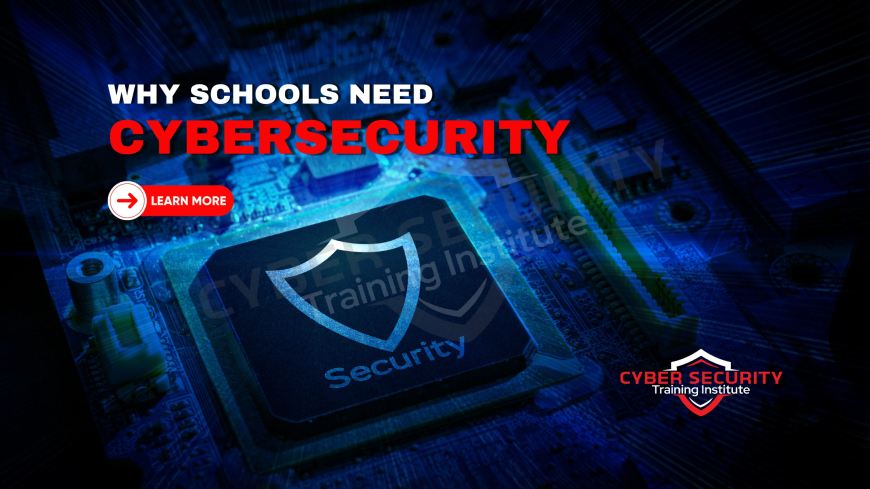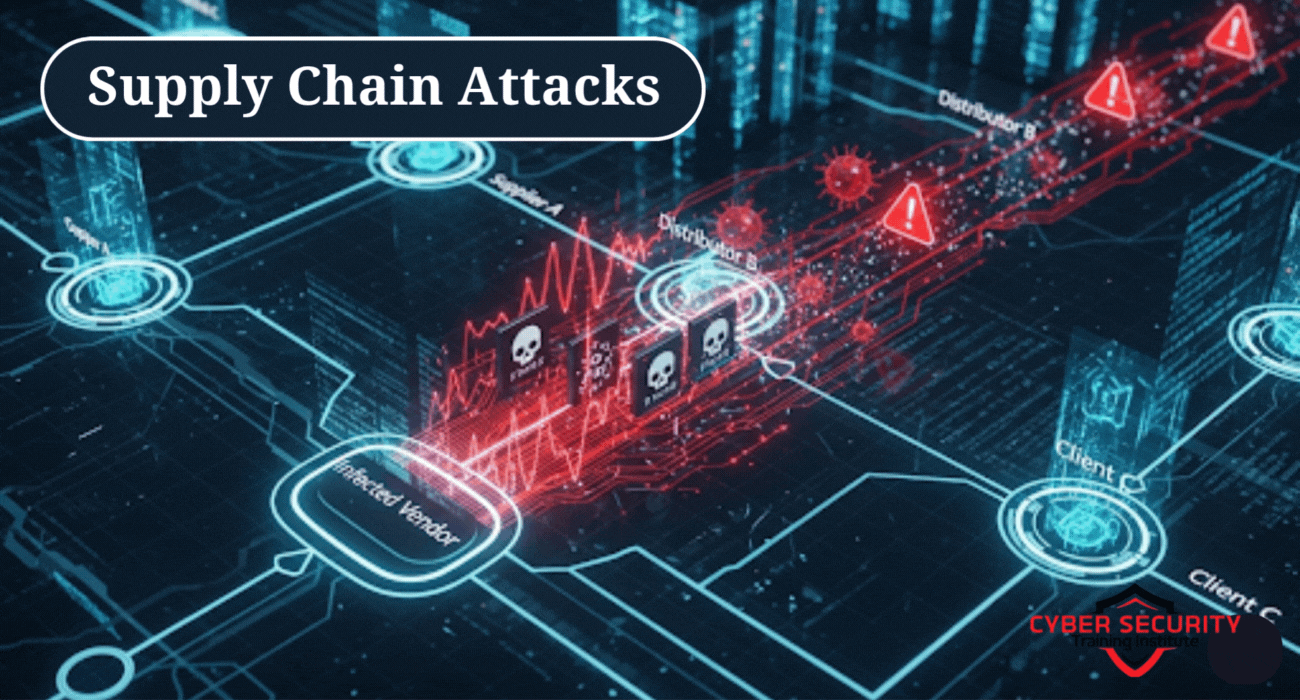Why Cybersecurity Should Be Taught in Schools Like Math and Science
In today’s digital age, where smartphones, computers, and the internet are part of daily life, protecting our online presence is as crucial as locking our front doors. Yet, many people—especially young students—are unaware of how to stay safe online. Cybersecurity, the practice of protecting systems, networks, and data from digital attacks, is no longer just a topic for IT professionals. It’s a life skill everyone needs. Just as schools teach math to help students solve problems and science to understand the world, cybersecurity education should be a core part of the curriculum to prepare students for a connected world. This blog explores why teaching cybersecurity in schools is essential, how it can be done, and the benefits it brings to students and society.

Table of Contents
- Why Cybersecurity Education Matters
- The Current State of Cybersecurity Awareness
- Benefits of Teaching Cybersecurity in Schools
- How to Integrate Cybersecurity into the Curriculum
- Challenges and Solutions
- Real-World Impact of Cybersecurity Education
- Conclusion
- Frequently Asked Questions
Why Cybersecurity Education Matters
The internet is a powerful tool, but it’s also a playground for cybercriminals. From phishing scams that trick users into sharing personal information to ransomware that locks devices until a ransom is paid, digital threats are growing. Children and teenagers, who spend hours online gaming, socializing, or studying, are especially vulnerable. Without proper knowledge, they might share passwords, click malicious links, or post personal details that could be exploited.
Teaching cybersecurity in schools equips students with the tools to navigate the digital world safely. Just as math teaches logical thinking and science fosters curiosity, cybersecurity education builds critical thinking and awareness. It’s about empowering students to protect themselves and their communities from digital dangers.
The Current State of Cybersecurity Awareness
Many students lack basic cybersecurity knowledge. A 2023 survey by the National Cyber Security Alliance found that 60% of teens didn’t know how to recognize phishing emails, and 45% used the same password across multiple accounts. This gap in knowledge leaves young people exposed to risks like identity theft or cyberbullying.
Adults aren’t much better off. Data breaches, where hackers steal sensitive information like names or credit card numbers, affected over 2.6 billion personal records in 2022 alone. Schools, often underfunded in IT resources, are prime targets for cyberattacks. Teaching cybersecurity early can bridge this gap, creating a generation that’s proactive about online safety.
Benefits of Teaching Cybersecurity in Schools
Including cybersecurity in school curriculums offers numerous advantages:
- Empowering Students: Knowledge of cybersecurity helps students make informed decisions online, like spotting scams or securing their accounts.
- Career Opportunities: The cybersecurity industry faces a global shortage of professionals, with over 3 million unfilled jobs in 2024. Early exposure can inspire students to pursue these careers.
- Protecting Communities: Educated students can share their knowledge with family and friends, creating a ripple effect of awareness.
- Building Critical Thinking: Cybersecurity teaches problem-solving and analytical skills, similar to math and science.
| Benefit | Description | Impact |
|---|---|---|
| Empowerment | Students learn to protect their data and privacy. | Reduces personal risk of cyber threats. |
| Career Path | Exposure to cybersecurity careers. | Fills industry gaps, boosts economy. |
| Community Safety | Students educate others on safe practices. | Strengthens societal resilience. |
| Skill Development | Enhances critical thinking and problem-solving. | Prepares students for complex challenges. |
How to Integrate Cybersecurity into the Curriculum
Adding cybersecurity to school curriculums doesn’t mean creating a standalone subject right away. It can be woven into existing subjects or introduced gradually. Here are some practical ways:
- Incorporate into Computer Science: Teach concepts like encryption (scrambling data to keep it safe) alongside coding.
- Blend with Social Studies: Discuss the ethics of data privacy and the societal impact of cyberattacks.
- Use Real-Life Scenarios: Create lessons around spotting phishing emails or securing social media accounts.
- Gamify Learning: Use interactive games or simulations to teach concepts like password strength or malware detection.
- Collaborate with Experts: Invite cybersecurity professionals to give talks or workshops.
Starting as early as elementary school, lessons can be age-appropriate. For younger students, focus on simple ideas like not sharing personal information online. For older students, dive into topics like two-factor authentication (an extra layer of security) or ethical hacking.
Challenges and Solutions
Integrating cybersecurity into schools isn’t without hurdles. Here are some challenges and how to address them:
- Lack of Trained Teachers: Many educators aren’t familiar with cybersecurity. Schools can offer professional development or partner with organizations like the Cyber.org initiative.
- Curriculum Overload: Schools already have packed schedules. Cybersecurity can be integrated into existing subjects to avoid adding new ones.
- Resource Constraints: Schools with limited budgets can use free online resources, like those from Google’s Be Internet Awesome program.
- Keeping Content Engaging: Use hands-on activities, like mock hacking challenges, to make learning fun and relevant.
Real-World Impact of Cybersecurity Education
Teaching cybersecurity has tangible benefits. In 2024, a pilot program in California schools introduced cybersecurity modules to 10,000 students. Post-program surveys showed a 70% increase in students’ ability to identify phishing attempts. Schools also reported fewer incidents of students falling for online scams.
Beyond individual protection, educated students can contribute to a safer digital society. For example, a teenager who understands secure password practices can help their parents avoid identity theft. Over time, this creates a culture of cybersecurity awareness, reducing the burden on businesses and governments to combat cybercrime.
Conclusion
Cybersecurity is no longer optional—it’s a necessity in our connected world. By teaching it in schools like math and science, we prepare students to navigate digital risks, pursue rewarding careers, and contribute to a safer society. While challenges like teacher training and curriculum space exist, creative solutions like integrating lessons into existing subjects or using free resources can make it feasible. The benefits—empowered students, stronger communities, and a future-ready workforce—are worth the effort. Let’s make cybersecurity education a priority to build a generation that’s not just tech-savvy but cyber-secure.
Frequently Asked Questions
What is cybersecurity?
Cybersecurity is the practice of protecting computers, networks, and data from unauthorized access or attacks.
Why should kids learn cybersecurity?
Kids use the internet daily, and learning cybersecurity helps them stay safe from scams, hacking, and privacy breaches.
Isn’t cybersecurity too complex for students?
Not at all. Lessons can be tailored to be age-appropriate, starting with simple concepts like password safety.
How can schools teach cybersecurity without adding new subjects?
It can be integrated into subjects like computer science, social studies, or even through interactive games.
What are phishing emails?
Phishing emails are fraudulent messages that trick users into sharing personal information or clicking malicious links.
Can cybersecurity education help with careers?
Yes, it introduces students to a growing field with millions of job opportunities worldwide.
Are schools at risk of cyberattacks?
Yes, schools are often targeted due to their sensitive data and limited IT resources.
What is two-factor authentication?
It’s an extra security step, like entering a code sent to your phone, to verify your identity.
How can cybersecurity be made fun for students?
Using games, simulations, or mock hacking challenges can make learning engaging.
Do teachers need to be cybersecurity experts?
No, they can be trained through professional development or use free online resources.
What age should cybersecurity education start?
It can start in elementary school with basic concepts like not sharing personal details online.
Can students teach others about cybersecurity?
Yes, educated students can share knowledge with family and friends, spreading awareness.
What are some free cybersecurity resources for schools?
Programs like Google’s Be Internet Awesome and Cyber.org offer free tools and lesson plans.
Why is there a cybersecurity job shortage?
The rapid growth of digital technology has outpaced the number of trained professionals.
What is ransomware?
Ransomware is malicious software that locks devices or data until a ransom is paid.
How does cybersecurity improve critical thinking?
It teaches students to analyze risks, solve problems, and make informed decisions.
Can cybersecurity education prevent cyberbullying?
Yes, it can teach students to recognize and report harmful online behavior.
Are there cybersecurity competitions for students?
Yes, events like CyberPatriot encourage students to test their skills in a fun way.
How does cybersecurity education benefit society?
It creates a more aware population, reducing the impact of cybercrime on communities.
Is cybersecurity only for tech-savvy people?
No, it’s a life skill for everyone, just like reading or basic math.
What's Your Reaction?
 Like
0
Like
0
 Dislike
0
Dislike
0
 Love
0
Love
0
 Funny
0
Funny
0
 Angry
0
Angry
0
 Sad
0
Sad
0
 Wow
0
Wow
0















